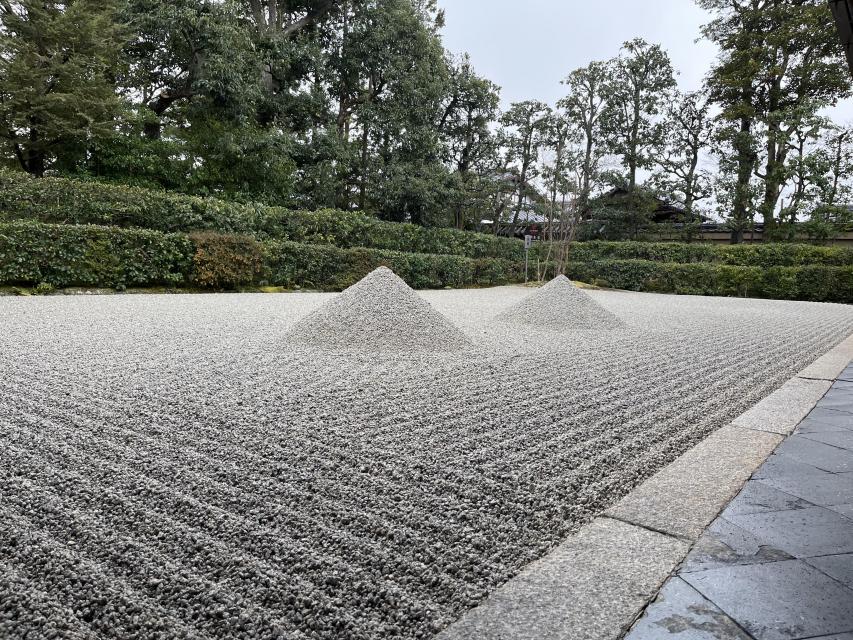
Daisen-in Temple is the most famous sub-temple of Daitoku-ji Temple. Its beautiful garden is one of the greatest in Japan. Large rocks have been arranged in a small space to represent mountains and ravines. The garden employs all the elements of a classic Song dynasty Chinese landscape painting, but brings a three-dimensional form in a garden which surrounds the main hall on all four sides. The dry river landscape is a metaphor for the journey of life – from the narrow rapids of youth to the more mature stream of adulthood. Rocks symbolize human trials and tribulations. Eventually, the river empties out into a flat void of white gravel which symbolizes the void of death to which all travelers return. Further out stands a lone Bodhi tree beyond two gravel cones, which represent the obstacles to the attainment of enlightenment.
Daisen-in Temple’s main hall is one of the few original buildings to survive the fire that destroyed much of Daitoku-ji Temple. It is one of the oldest remaining examples of the Hojo style of Zen-Buddhist architecture, and its painted screens are also masterpieces. Everything about this temple speaks to the deep beauty of the Zen aesthetic. It is a must-see.
Basic Information
- Address : 54-1 Daitokuji-cho Murasakino Kita-ku, Kyoto
- Website : Click here (Japanese)




